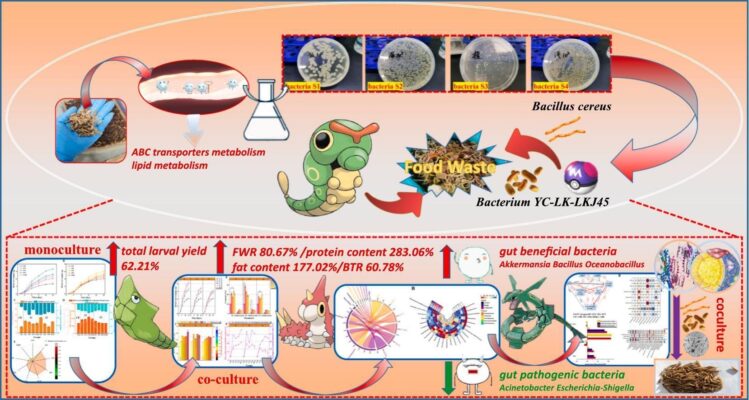
Bacteria Help Black Soldier Flies to Thrive
While decaying junk may not look very welcoming for us as humans, it is a fabulous environment for numerous organisms, with black soldier flies being only one species of many. These organisms do not live in isolation but interact with each other in a variety of ways. Some of these interactions are antagonistic, such as competing for the same resources. Others are beneficial and can even be used to improve rearing methods. A recent study out of Beijing demonstrated that adding two bacterial strains promotes growth and nutrient accumulation by black soldier fly larvae.
Qiu, Y., Wang, P., Guo, Y., Zhang, L., Lu, J. and Ren, L., 2023. Enhancing food waste reduction efficiency and high-value biomass production in Hermetia illucens rearing through bioaugmentation with gut bacterial agent. Science of The Total Environment, 166488.
The black soldier fly (BSF) rearing technology has been a promising bioconversion method for food waste (FW) disposal. However, when used independently, it currently only achieves low efficiency and biomass transformation rates (BTR). This study screened and identified two strains of gut beneficial bacteria, Bacillus cereus and Bacterium YC-LK-LKJ45. The efficiency of a complex culture formulated by these strains was investigated, focusing on enhancing FW reduction and high-value biomass production during the rearing of BSF larvae. The coculture agent group (G1–10%, with two strains in 1:1 volume ratio at a 10 % dosage) exhibited higher larval yield (627.67 g·kg−1), BTR (47.90 %), FW reduction efficiency (80.67 %), and total protein and fat yield (261.99 g·kg−1and 46.24 g·kg−1) compared to the control and the monoculture agent group (which added a single gut beneficial bacteria agent, either Bacillus cereus or Bacterium YC-LK-LKJ45). The bacterial agent altered the richness and diversity of the gut microbial community of BSF, increasing the relative abundance of beneficial bacteria such as Bacillus, Oceano bacillus, and Akkermansia, while decreasing pathogenic bacteria, such as Acinetobacter and Escherichia-Shigella. Structural equation model quantification revealed that α-diversity (λ = 0.897, p < 0.001) and BTR (λ = 0.747, p < 0.001) are crucial drivers for enhancing high-value biomass during bioaugmentation rearing. This investigation provides a theoretical framework for the effective management of food waste using BSF, enhancing its decomposition and transformation into higher-value biomass.
